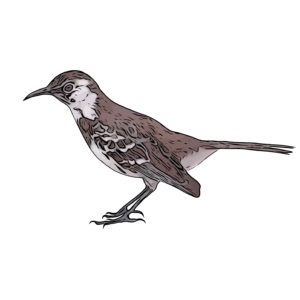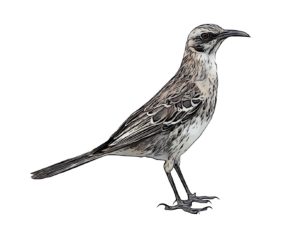Identification
The only mockingbird within its range.
Description
Arguably the most distinct of the four Galapagos’ Mockingbirds, with two diagnostic blotches on the side of its chest connected by indistinct brown markings (in some individuals these features combine to resemble a collar), dark grey-brown upperparts, a white stripe behind its eye and dark brown flecks on its flanks. Males are slightly larger than females, but otherwise sexes are alike. Juveniles are more boldly streaked than adults.
Galapagos Distribution
Found only on two small islets off Floreana, namely Gardner-near-Floreana and Campeón. As there are no land-based visitor sites on these islets, the only chance visitors have to see this species is by scanning for mockingbirds from their boat while sailing past.
Global Distribution
Endemic to the Galapagos.
Status in the Galapagos
An extremely localised endemic resident, common within its tiny range.
Conservation
Due to its small range and regular population fluctuations, this species is considered to be endangered. Rapid population declines occur during dry El Nina years. Such a cycle in 2006 meant less than 50 adults survived in 2007 and the species was listed as critically endangered. Since then the population has recovered to an estimated 700+ birds and the species was upgraded to “endangered” on the red list in 2017. Occured across Floreana untill it became extinct on the main island in the late 1800’s. This was likely as a result of predation by introduced cats, dogs and rats and habitat destruction by introduced goats. Becuase of the small population size and population bottlenecks, there is concern over this species genetic diversity and ability to survive destructive diseases.


